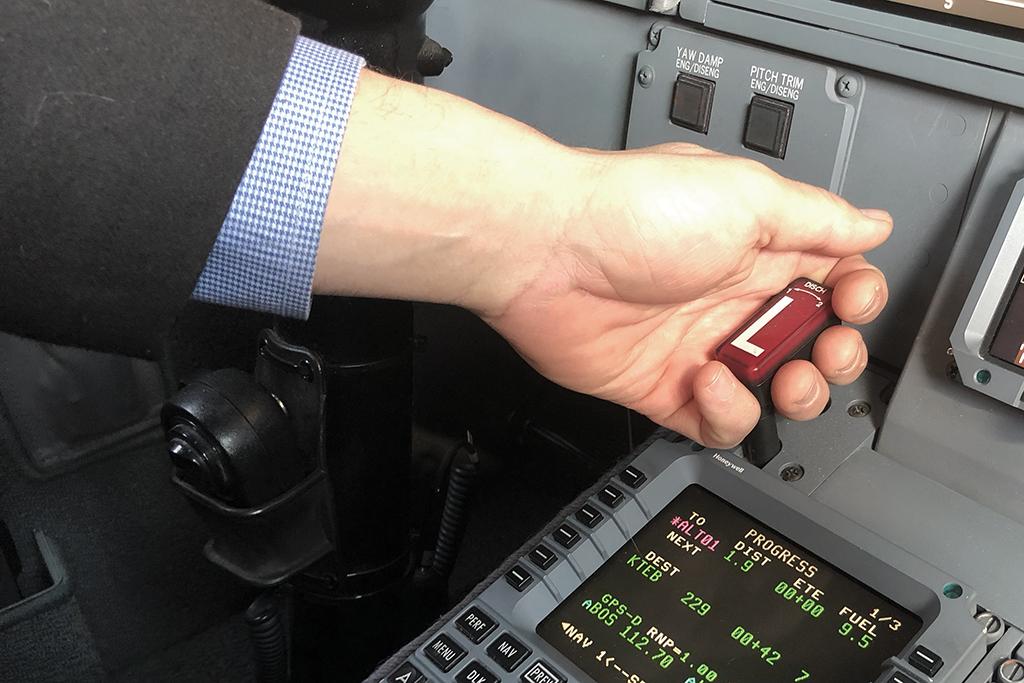
There is no doubt about the fidelity of today’s latest generation flight simulators: They are fantastic. We long ago figured the physical problem of fooling our inner senses to believe we are in flight: through simulator-delivered sounds, visuals and motion. We still cannot simulate sustained G-forces, but since most flight is performed at 1g, this is hardly worthy of complaint. We simulate things that happen regularly during flight as well as those things buried deep inside the emergency procedures of our manuals. But still there is a problem.
Before we get to that, let’s consider the root of it. Very few pilots have ever died in simulators. I only personally know of one. He was a Gulfstream GV simulator instructor who had a heart attack sitting at the operator’s panel. Then, too, another instructor and two pilots were killed in October 2014 when a King Air crashed into the FlightSafety International facility during takeoff from Wichita Dwight D. Eisenhower Airport (KICT).
But for those of us up front, no matter how many engines are “burning and not turning,” we know that eventually a gantry will lower and we will walk away from the simulated wreckage. You cannot realistically experience fear and are unlikely to panic. I’ve seen pilots get rattled in simulators, but not an “I am about to die” sort of panic. So, that’s not the problem.

The problem is that after training through a laundry list of synthetic emergency procedures, we convince ourselves that we (a) have the fortitude to deal with it all, (b) know what we are doing and (c) have been trained to deal with whatever happens. But the truth is we don’t know how we are going to perform until the day something really wrong happens to us in the real world. If you have been under fire and managed to keep it together, chances are you’ll probably do OK. If you have struggled with sudden duress, or never been so tested, there are ways to improve your odds in the future.
Having witnessed a fair amount of panic in cockpits over the years, I know that dealing with it is something that cannot be trained by simply listening to a lecture, reading an article or practicing in a full-motion simulator. I once lost an engine at V1 in a U.S. Air Force Boeing 707 (EC-135J) during takeoff from Dallas Love Field (KDAL). To make matters worse, the engine indications on the three turning engines were erratic. There was not much to do but point the airplane to the nearest long stretch of runway and land, which is what I did. After the flight, the rest of the crew admitted to everything from full panic to “genuine concern.” But everyone calmed down once a decision was made and we all got busy with the task at hand.
With this experience and others, I had developed a philosophy but never really articulated it in a way that is really helpful. I recently took a check ride from a training captain who works for a major foreign airline that has a fleet of very large airliners flown by a cadre of very young first officers. He worries about them a lot. How will they react when things go sour in the cockpit? He has put into words the philosophy I have been trying to articulate for many years. His airline was recently named one of the world’s safest, so I think he is onto something.
He tells his charges that when things are not going as they should: (1) don’t get busy, (2) don’t get smart and (3) do things for a reason. What makes his words impactful, however, are the emotional stories behind each. That is key. You need to have a personal connection, either you or someone you know, that relates to each of these fundamental ideas. With that kind of emotional connection, your subconscious mind is more likely to remember what to do (and not to do) when the time comes to face your next inflight emergency.
Don’t Get Busy
I learned early on the value of taking a breath to think things through while I was in Air Force pilot training. I was assigned to Williams AFB near Chandler, Arizona, to fly the Cessna T-37 and Northrop T-38. The first jet was considered the more docile of the two. It even had a cartoonish name: the “Tweet.” The second jet, the “Talon,” was the ride of choice for the Air Force Thunderbirds that year.
As it turns out, the T-37 was not so docile. Between its introduction in 1956 and 1979, the year I flew it, we had lost 111 of them, killing 23 pilots. The T-38 came out four years later but had a higher loss rate, 132 aircraft and 51 pilots. With these kinds of losses, it was easy to get into a hyperactive mindset when something went wrong: I need to do something!

If you have ever attended one of those T-38 air shows, you might have heard the airplane had a roll rate of 720 deg. per second. In other words, you could do two aileron rolls in a second. The procedure for an aileron roll in most airplanes requires you raise the nose a few degrees first. But in the T-38 you just moved the stick left or right and it was over before you knew it. It was quite the machine.
During my year in the jet we were told half the fleet had an aileron actuator pin installed upside-down and if it came loose the actuator would spring load down, turning the airplane into a corkscrew. (These days the fleet would be grounded and every aircraft inspected. Back then, you soldiered on.) A few weeks later, we almost lost an airplane because an electronic yaw damper commanded full rudder and that turned the airplane into a . . . wait for it . . . corkscrew.
The aileron pin failure would theoretically happen so fast that if you didn’t immediately eject, the lateral forces and disorientation would prevent you from doing so. The yaw damper gave you about a second to turn it off if it failed, but if you didn’t, you were probably too late. A classmate of mine was piloting a cross-country flight with his instructor in the back seat when they both felt the airplane roll suddenly. “Aileron pin!” they shouted simultaneously. Luckily, they were flying over a remote area of Utah and let ATC know they would be doing a controlled bailout. Both pilots ejected and made it to the ground without injury.
The student had to brief our class on what had happened. I asked him, “When did you realize you made a mistake?” He said that after he checked his parachute canopy above him, he shifted his eyes down and caught a view of his empty T-38, flying perfectly wings level in what appeared to be level flight. As it turns out it was in a slight dive and impacted the desert below, still wings level. So, what happened? We think that as he was flying the instructor hit the stick in one direction and he immediately corrected in the other. They were fighting each other but since the cockpit is tandem, neither saw that the other was on the stick. The lesson learned, we were told, was to always know who has control of the jet. But I took away another lesson.
Both pilots have a direct view of the ailerons and a view of the rudder through mirrors. If one of the aileron pins had come undone that aileron would have been full down and the opposite would be normal. Had they taken a moment to look they would have realized that. The student was allowed to return to the class while the instructor spent the next month briefing everyone in the wing on how to avoid his mistake. After he briefed us, the lead instructor had some wise words to add.
“Two-part question! First, what’s the first thing you have to do in the event all hell breaks loose and you don’t have a clue what’s going on? Second, when do you do that?” After none of us gave an answer he provided his own. “The first thing you have to do is nothing! And you should do that immediately!”
But is that really true? Aren’t there moments where doing nothing is the worst thing you can do? An engine failure, fire, control problem on takeoff before V1? Yeah, that requires immediate action. A rapid depressurization at high altitude? Yes. A cabin fire? Yes. Anything else? I guess it depends on the airplane. Modern airplanes are smart. In many cases so smart that doing nothing is the best thing you can do. In those cases, if you want to survive the problem, then don’t get busy.
Have a reason for doing something before you do it. Don’t just do something because you think you must. Take a moment to analyze the situation, consult with the crew, make a command decision, communicate that decision, and then execute it. Nowhere is the “don’t get busy” fundamental more important than when flipping switches, pressing buttons or moving levers, especially when close to the ground. Case in point: TransAsia Flight 235.
On Feb. 4, 2015, the world’s confidence in passenger carrying aircraft was shaken by what should have been an easily handled engine failure. TransAsia Flight 235, an ATR 72, had just departed Taipei Songshan Airport (RCSS) when the right engine automatically feathered as the airplane climbed through 1,200 ft. The left engine automatically increased its power, a cockpit indication announced the fact that the right engine had flamed out, and the autopilot applied the necessary yaw corrections. There were no indications of fire and no real reason to do anything other than fly the aircraft.
However, the captain disconnected the autopilot and announced, “I will pull back engine one throttle.” The first officer said, “Wait a minute, cross check,” but it was too late because the captain had already pulled it back. The first officer then busied himself with the procedures needed to shut down the wrong engine as the captain busied himself by ignoring the need to keep the airplane in coordinated flight. The stick shaker went off just as they completed the No. 1 engine feather.
As the airplane banked to the right the pilots attempted and failed to engage the autopilot. Fifteen seconds later, the first officer realized both engines were shut down. Five seconds after that the captain directed “restart the engine,” and 11 sec. later the No. 1 engine began to show signs of life. Just as the airplane started a bank to the left, it stalled again, and 10 sec. later the left wing collided with a taxi on an overpass. Moments later the airplane plunged into a nearby river inverted.
It would be tempting to classify this as a simple wrong engine shutdown, but that would be generous to the pilots. The aircraft was doing a fine job of handling the situation and even presented the pilots with the proper checklist below the engine instruments. Yes, the captain failed to identify which engine had auto-feathered and immediately pulled back the operating engine. The first officer could have saved the day by being more assertive but succumbed to the desire to “do something, anything” and the captain’s rushed decision gave him “anything” to do. Both pilots were presented with a stressful situation and I think panic compelled them to do something. In short, they wanted to get busy. That is a natural human inclination, but there are many such inclinations we pilots must train ourselves to resist.
Sooner or later things do not go as planned in the cockpit, things break, or the system breaks down and we learn the wisdom behind that instructor’s admonishment: “The first step in any emergency is to do nothing. And you should do that immediately.” If you want to survive as a pilot, don’t get busy.
Don’t Get Smart
For most pilots, there comes a time in the progression from novice to professional when everything starts to make sense. We start to believe we know everything we need to know and there is little left to learn. If we are lucky, we get mildly embarrassed to find out just how wrong we were and realize the learning never stops. If we are unlucky, bad things happen.
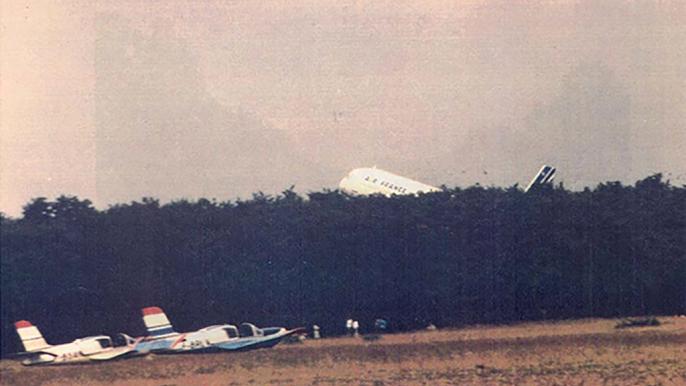
In a previous lifetime I was a pilot for the 89th Airlift Wing at Andrews AFB, Maryland. You may have heard members of the wing call themselves SAM Fox. SAM is short for Special Air Missions and many years ago they appended their call signs with a slash Foxtrot, to denote a special air mission foreign. Over the years the emphasis was placed on special and 89th pilots tended to think of themselves as a cut above all others. If you remember the scene from the movie “Men in Black,” you will have the right idea.
An interview candidate expressed the desire to be “the best of the best, sir!” We had a lot of those types at Andrews. That, of course, is a problem. We Air Force pilots are issued specially reinforced egos and when you add to that ego you are asking for trouble.
I was once flying one of those foreign missions from Washington to various parts of Africa with a U.S. ambassador on board. I was paired with an examiner who would trade legs with me and evaluate everything I did. He flew the first leg into Lajes Field, Azores. The aircraft for this mission was a Gulfstream III and we were landing simply to refuel.
As we came within VHF range I found out we had a 40-kt. crosswind. The maximum demonstrated value was only 21 kt., but the Air Force established a limit of 30 kt. I knew we had enough gas to continue on to Portugal where the winds were more favorable. The examiner — I’ll call him Karl — saw me pull out the charts for Lisbon and told me to put them away. I asked him about the 30-kt. limit and he reminded me that we were SAM Fox pilots and the limits did not apply to us. His landing was flawless.
Most of the trip through Africa went well and our last stop before returning to the U.S. was Madrid. It was my leg and we were at 45,000 ft. crossing the Mediterranean when I noticed the outside air temperature was -75. Later Gulfstreams would allow this, depending on your speed, but the limit on the GIII was -70. I asked Karl to request a lower altitude and he simply said, “We’re not doing that.” I said, “What about the limitation?” He said, “It’s waived.” I asked, “By whom?” and he responded, “By me.”
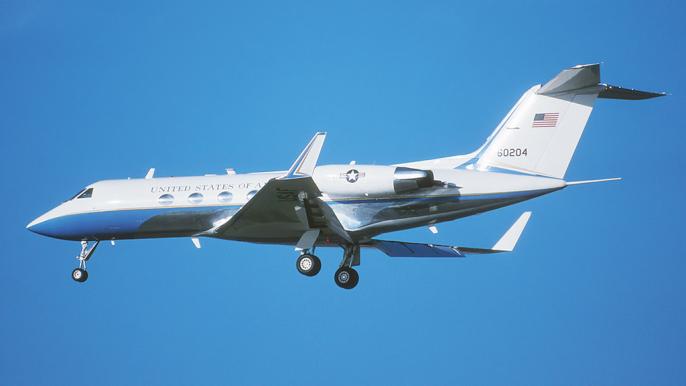
At top of descent, the ambassador himself asked Karl if it would be OK for the missus to have the jump seat for landing, and Karl said that would be fine. We were at around 8,000 ft. when I asked for the first notch of flaps. Karl moved the flap handle and nothing happened. One of the other things about being a SAM Fox pilot back then is we had the emergency procedure checklists memorized. Yes, we did. We practiced them a lot and I had done several no flap landings without reference to the checklist. I could see Karl attempt to actuate the emergency flap system without success. He moved his airspeed bug to the zero flaps setting and said, “your Vref is posted.”
So, there I was flying a no-flap approach on a White House mission with Mrs. Ambassador in the jump seat. We had accomplished the flap-failure and zero-flap-landing checklists from memory and as I pulled the throttles to idle the smug voice in my head was saying, “Well done, Mister S. Fox, well done.”
However, as the wheels kissed the runway and I brought the reversers out, all hell broke loose. We got a reverser unlock warning horn, a flaps-up whistle and a few other noises I had never heard before. Karl reached cross-cockpit to pull several circuit breakers and then back to his seat to move a few switches and by the time we were at taxi speed things were quiet again.
When we got back to Andrews, our squadron commander asked about the trip and I told him about all our mistakes. He laughed and said he suspected as much, but the SAM examiner and instructor force was very tight-lipped about such things. He told me that in his experience, if you think you know it all, there is at least one thing you are wrong about.
I hear the good folks at the 89th are better these days and guys like Karl, and me for that matter, have been purged from the system. It has been my experience that pilots who think limitations apply to everyone except themselves are too smart to be flying airplanes and we would all be better off if they found something else to do. So, it appears that Air Force pilots belonging to “select” or “special” units are at higher risk for being too smart to be safe. Another such category is air show and air demonstration pilots.
In the summer of 1988, the Airbus A320 was brand new and its launch customer, Air France, was rightfully proud of it. Flight Capt. Michel Asseline was given the honor of flying a low-level fly-past for an air show at the Habsheim Aeroclub in eastern France with 130 dignitaries on board. Asseline was a bit of a rock star at Air France and had flown several such air shows. He was certainly qualified. But things didn’t go as planned.
The flight was planned for an overflight of the airport’s paved runway with clear ingress and egress zones. French regulations stipulated that the fly-past could be done no lower than 170 ft., but Air France rules allowed 100 ft. In any case, Asseline had flown the maneuver before at 100 ft. As the crew first caught sight of the airport, they realized the air show crowd was set up abeam a grass runway, not the paved runway. What to do?
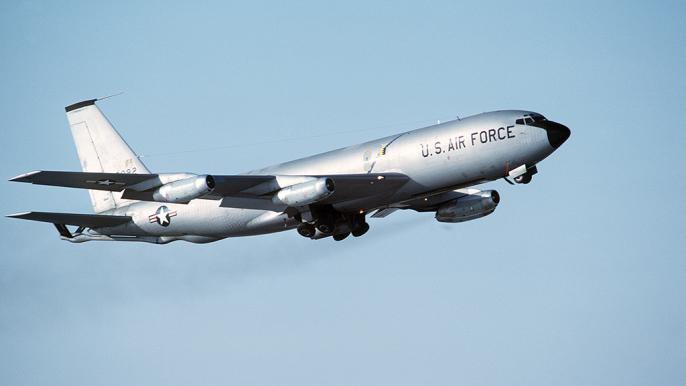
Of course when you are a very smart and accomplished pilot, you adapt. The crew flew their fly-past over the grass runway. Of course it would be easy to excuse the crew because, what can go wrong? Well, the first thing that could go wrong is Asseline dipped quite a bit lower than 100 ft.; video evidence would suggest he got as low as 30 ft. He said, after the fact, that the radio altimeter was too hard to read and he was probably right. At the time he believed it was time to add go-around thrust, the engines did not respond.
This very smart captain destroyed the airplane, but incredibly only three of the 136 on board were killed. Asseline was sentenced to prison for flying too low, too slow, and adding thrust too late. There is a lot of evidence that the flight data recorder and other evidence were tampered with and that France was too quick to condemn the captain in an attempt to clear the airplane. In my opinion Asseline did fly too low and too slow, but I think he attempted to add power as he said. I do think France was eager to get this Airbus on the market with a flawless safety record and this captain was the scapegoat. So, let’s cover the too low, too slow, and adding thrust too late charges.
Too low. Is the radio altimeter too hard to read? Yes, I agree that it is, especially in the likely buffeting in the fly-past maneuver. But I’ve flown many fly-past maneuvers in the Boeing 747 and I think you should be able to tell the difference between 100 ft. and 30 ft. Of course, there will be a depth perception problem doing the fly-past over the wide grassy area as opposed to a narrower paved runway. So, the very smart captain was not smart enough to realize this in the moment.
Too slow. We do not often fly at such low altitudes, other than when intending to land, and when we do so our attention is necessarily glued outside. But something magical happens at one-half wingspan above the surface that improves airplane handling: ground effect. A smart captain can be forgiven for not realizing the stick and rudder feel would mask the lower speed of the airplane, but the very smart captain should have known better.
Too late power addition. The plan was to execute the fly-past at Alpha Max, the airplane’s maximum angle of attack, which is close to but above 1g stall speed. Small turns are possible and the airplane is controllable. A smart captain knows that if anything more than modest maneuvering is needed the airplane should be accelerated. What Asseline did not realize was that at 30 ft. and in ground effect, a higher Alpha Max was possible and his aircraft’s higher angle of attack would have increased engine spool-up times.
Asseline has collected many defenders who argue the airplane did not behave as expected and that the French government pressured investigators to clear the new airplane quickly before sales were harmed. They might be wrong or right, but in either case the very smart captain wasn’t smart enough to execute the fly-past maneuver in such an ad hoc manner.
You can be the smartest pilot in your circle and you can be the smartest pilot to have ever flown your aircraft type or for your operator. But aircraft are complicated and situations are unpredictable. In aviation as with many hazardous endeavors, if you want to survive, don’t get smart.
Do Things for a Reason (No Reason = No Action)
My first stint as an instructor was in a small Air Force EC-135J squadron where we grew our instructor force “in house.” That is, an instructor took you through a syllabus, you flew several practice flights, took a check ride and you became an instructor. The Air Force did not like this approach and encouraged us to attend a real course at our first opportunity. Since the service didn’t have a formal EC-135J schoolhouse, they sent me to the closest match, the Strategic Air Command’s Central Flight Instructor Course flying the KC-135A Stratotanker.
Since I was not responsible for knowing the airplane or the mission, and having been an instructor for over a year, the formal course was easy. My instructors were looking for ways to throw curveballs and that led to my day flying several single-engine approaches on a four-engine airplane. I asked my instructor, “Are we really allowed to do this?” The answer was, “Nothing says we can’t.”
Almost predictably, the one engine that was never simulated as failed managed to fail on us in a spectacular fashion. During a touch and go landing, it seized with such force the airplane shook for a few seconds while I got the other three back up to thrust. We brought the airplane home and I listened outside the squadron commander’s office as my instructor was getting the proverbial riot act read to him. At one point I heard my instructor say, “I was thinking . . .” and his boss countered with, “No, you weren’t.”
A week later I became a formally blessed instructor pilot and have reprised that role in many other airplanes since. Like my unthinking KC-135A instructor, I too have searched for imaginative ways to impose stress on my students. But having seen the ad hoc method fail, I tended to stick to the lesson plan more closely than most. During an emergency procedure, simulated or actual, the aircraft manufacturer’s guidance will have a lot of intellectual horsepower behind it, certainly more than you can muster in the moment. If you are doing something without a well-thought-out reason, you probably shouldn’t be doing it at all.
Of course, losing an engine on a training flight is child’s play compared to what is possible in the operational world. The crew of Alaska Airlines Flight 261 on Jan. 31, 2000, for example, was set up. Their MD-80 was designed without a fail-safe mechanism on the horizontal stabilizer. The lubrication, inspection and replacement intervals on the components of the horizontal stabilizer had been extended, and the jackscrew on this particular airplane was found by one mechanic to be beyond tolerance, but his judgment was overruled by the next.
On a flight from Puerto Vallarta, Mexico, to San Francisco, the airplane’s horizontal stabilizer froze in a slightly nose-down direction while the autopilot continued to fly using the elevator only for over 2 hr. While climbing through 28,557 ft. at 296 kt., the crew received an out-of-trim condition warning light. They understood the horizontal stabilizer was jammed and spent the next 1 hr., 22 min. hand-flying the airplane with between 10 and 50 lb. of pulling force, all the while troubleshooting.
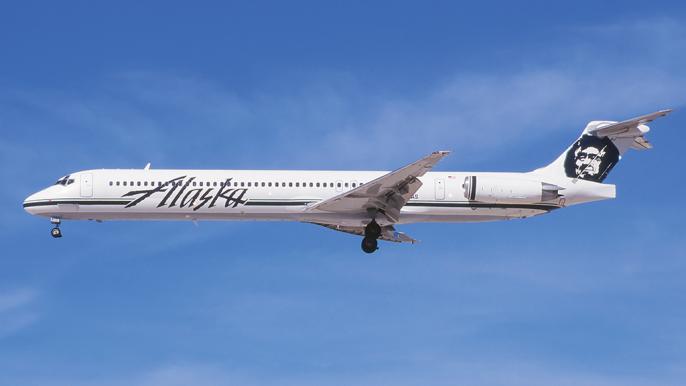
As it turns out, the jam was caused by threads from what is called an Acme nut preventing the jackscrew mated to that nut from spinning. There were three methods of trimming the horizontal stabilizer: a primary trim motor activated by switches on the pilots’ control wheels, an alternate motor activated by the autopilot and by mechanical trim wheels. The stabilizer was moved with the primary trim motor during the initial climb and then by the alternate motor using the autopilot until the stabilizer jammed. The pilots ran their emergency procedure checklist, trying both primary and alternate trim systems.
After several attempts of both primary and alternate systems, it appears the torque finally overcame the jam, sending the airplane into a dive. They managed to regain control at a lower altitude and speed and did a controllability check demonstrating the airplane was controllable with flaps and slats. They then cleaned the airplane up.
At this point the captain proposed trying the trim system again but the first officer disagreed, saying, “I think if it’s controllable, we oughta just try to land it.”
As they again deployed the flaps and slats, the air loads on the horizontal stabilizer overcame what was left of the stop of the jackscrew and the forward portion of the horizontal stabilizer let go. At this point the pilots no longer had pitch control of the airplane, though they fought it all the way down.
There is speculation that they tried the trim system again, but it is more likely that the cumulative stress on what was left of the Acme nut was just too much. In either case, the NTSB said their use of the autopilot while the horizontal stabilizer was jammed was not appropriate and that crews dealing “with an inflight control problem should maintain any configuration change that would aid in accomplishing a safe approach and landing, unless that configuration change adversely affects the airplane’s controllability.”
It is easy to point blame at pilots who do not survive an accident — they are not able to defend themselves. But in the case of Alaska Airlines Flight 261, their specific situation was not covered by their manuals and there was pressure, albeit self-imposed, to get the airplane to its planned destination where maintenance was available.
Their troubleshooting went above and beyond their manuals and perhaps that is worth noting. Their stabilizer inoperative checklist told them to not use the autopilot (which would have activated the alternate trim motor) and to consider the stabilizer jammed. At this point they didn’t have a valid reason for reattempting the primary and alternate trim systems. (No reason = no action.)
And If All That Fails . . .
Our newest generation of simulators are excellent tools for training, but they are only as good as their programming. There are times when an immediate action is called for and you should have those down cold in the simulator. For other problems, if you remember not to get busy, you should be able to harness the procedures in your manuals and the resources made available by your crew. If you stick to those known procedures, and don’t “get smart,” you should arrive at known outcomes.
Perhaps most importantly, we aviators need to realize our aircraft and flying environments are just too complicated to attack problems on an ad hoc basis. If you don’t have a valid reason for your action, don’t take the action. When things go wrong in an airplane, these ideas are fundamentals for survival.





